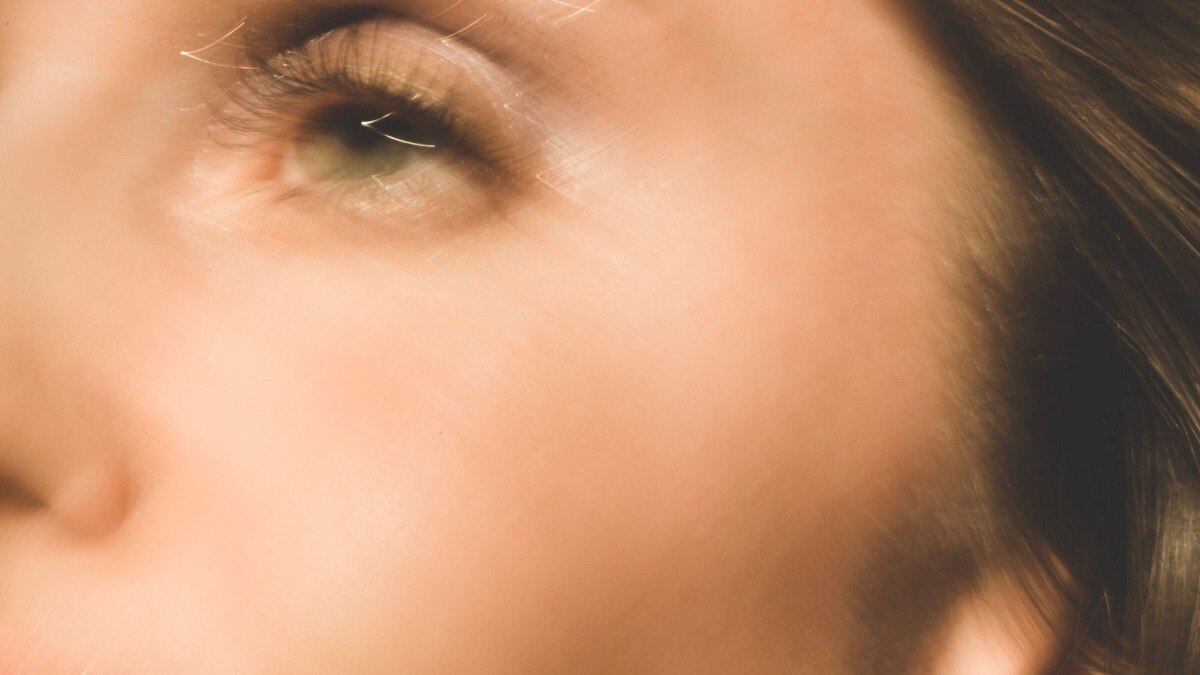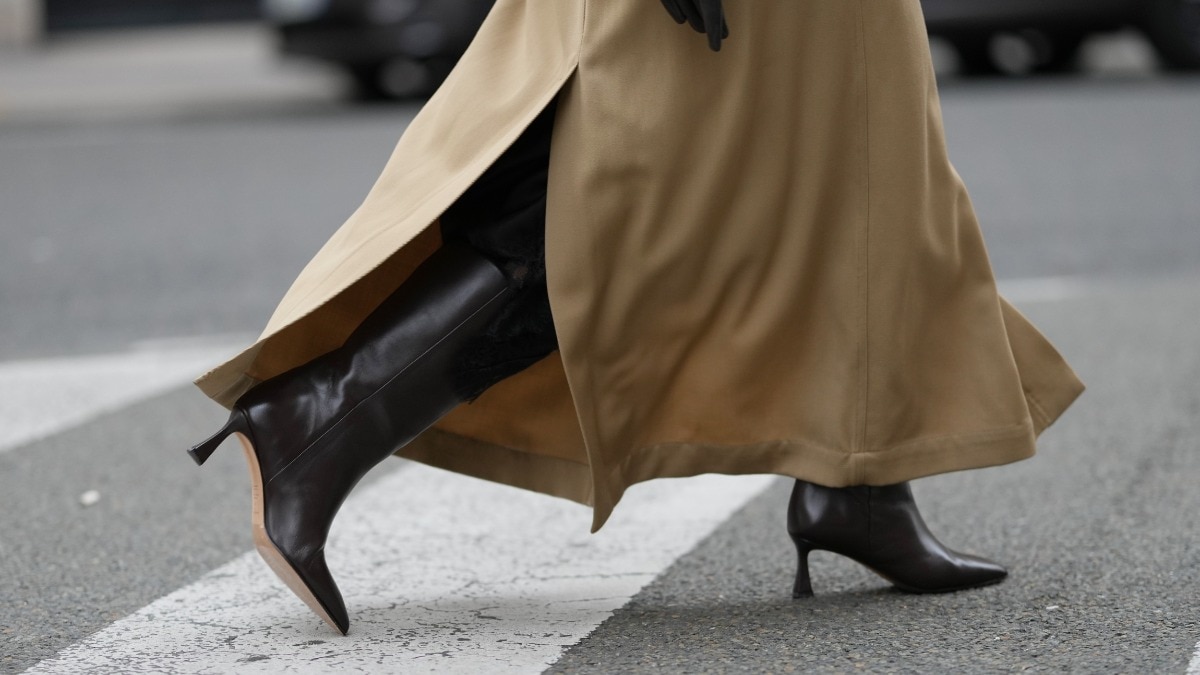The expert guide to buccal fat removal surgery
Plastic surgeons weigh in on TikTok's cheeky new surgical obsession.


The internet is abuzz with talk of buccal fat pad reduction, a facial plastic surgery procedure designed to slim and contour cheeks. In 2021, Chrissy Teigen shared her decision to undergo the surgery, while pop culture muses like Zoë Kravitz and Bella Hadid have popularised the chiselled cheek look, spurring interest in the aesthetic treatment.
"Patients might complain of excessive fullness or roundness of the face," Lara Devgan, a New York City-based board-certified plastic surgeon, explains. "A beautiful face has natural topography with highlights at the cheekbone and jawline, and low lights in the mid-cheek sulcus and neck. Buccal fat pad excision is a minimally invasive, low-downtime surgical procedure that achieves this subtle endpoint."
What Is Buccal Fat Pad Surgery Like?
Often performed under local anaesthesia, buccal fat removal begins with a small hole made in the cheek from within the mouth, through which the fat is removed, before a dissolvable stitch is placed. "It's a popular procedure because it has very little-to-no downtime (think: a week of swelling and bruising) and has no external incisions, so it can be done discreetly," board-certified Los Angeles-based plastic surgeon Kimberly Lee says. "I usually make a small incision, about 5mm, and remove the majority of the fat while leaving some behind so that patients don't look older or gaunt, but everyone's face is different."
The surgeon will typically remove most, but not all, of the fat. "As we age, we lose some fat in the face, so it's important to keep some fat in the cheeks—we just want to get rid of that full or 'chipmunk cheek' effect," Lee adds.
Who Is a Good Candidate for Buccal Cheek Surgery?
Double board-certified plastic surgeon Ben Talei, founder of the Beverly Hills Center for Plastic Surgery, points out that while the procedure itself is low-risk, it is only appropriate for a certain candidate. "On the wrong patient, buccal fat removal can actually age them ten to twenty years," Talei warns. "The buccal fat pads [are a unique type of fat pad that] serve as a support structure for the cheek and prejowl fold around the mouth. If taken out prematurely or excessively, lower facial collapse and shadowing may worsen."
Los Angeles-based, board-certified plastic surgeon Jason Roostaeian explains that genetics determines which candidates he recommends for the surgery. "Because buccal fat is a different character of fat than the rest of the face, a good way to test it is if you push it and it bounces back really slowly," he explains. In those patients, excising the buccal fat can help prevent the appearance of jowls, a particular risk as the skin loses collagen and elasticity with age. "For the patients that are genetically programmed to have large buccal fat in their cheeks, it might be offered as an adjunctive procedure [along with] a rhinoplasty or face lift, for example," says Roostaeian.
Similarly, Devgan notes that buccal removal is commonly paired with submental liposuction for overall facial slimming, as well as cheek and jawline augmentation, at her practice.
What are the Risks of Buccal Fat Removal Surgery?
With a qualified surgeon, the risks of factors like asymmetry, damage to the parotid duct, salivary gland, or facial nerves, are rare with buccal fat removal. "The main risk of excessive removal of the buccal fat, which causes shadowing on the face, and cannot be easily fixed," Talei says. He explains that between 50 to 70 percent of the fat is removed in order to retain the optimal amount of facial volume and support.
Age is another important consideration. Roostaeian corroborates this, adding, "I've had some older patients who had it when they were younger and regret it." As Talei points out, this is because in many patients, their faces would have slimmed out naturally beginning at the age of 25.
Bear in mind that the procedure is not reversible, and options are limited when it comes to remedying over-hollowing. Fat grafting is a possibility (although Talei warns that this is a challenging area for fat grafting). At the same time, lower molecular weight fillers and the bio-stimulatory filler Sculptra are other aesthetic tools that practitioners can utilise.
How Much Does Buccal Fat Pad Surgery Cost?
Whether or not you undergo the procedure should come down to your consultation with a qualified surgeon specialising in facial plastic surgery, whose aesthetic taste matches your own. The cost varies between practices, ranging from as low as $2,000 up to $15,000, and might be worth it for you, considering the alternatives for facial contouring are limited.
Although she notes that non-surgical alternatives to buccal removal do not exist, Lee shares that slimming the masseter muscles with a neuromodulator and enhancing the V-shape of the chin with filler or an implant can help achieve the desired look. Skin tightening using radiofrequency microneedling, such as with Profound RF, can help to slim and tighten the cheek area. Talei opposes, however, the use of the fat-reducing injectable Kybella or performing facial liposuction in the area.
As Roostaeian aptly puts it, in the right candidate—one with a genetic predisposition for fuller buccal fat in the cheeks, often in an older age group—the trendy surgery might be recommended. But it is certainly not for everyone. As President of the American Academy of Facial Plastic and Reconstructive Surgery (AAFPRS), Theda C. Kontis says, "Intuitively, removing fat from the face is a bad idea because as we age, we lose facial volume. I spend a lot of time restoring that volume with fillers, usually on patients 50 years and older."
Lead Image: Jena Ardell//Getty Images
This article originally appeared on Harper'sBazaar.com
Also Read: Why are my eyes always so puffy and tired?
Also Read:I tried biohacking my skincare routine










